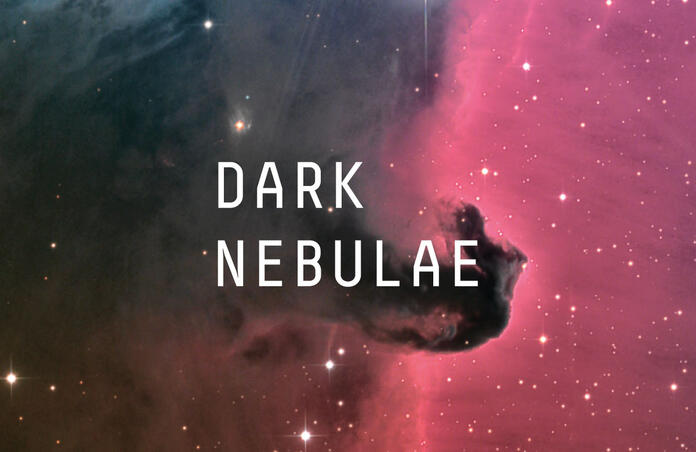What is a Dark Nebula?

In “What is a Nebula”, we considered emission nebulae, now we are going to look at nebulae where the opposite process absorption happens.
Anyway, let’s start from a larger scale: the interstellar medium (ISM) is, as the name suggests, the matter that lies between the stars and star systems of a galaxy. It’s mainly composed of dust particles and atomic, ionic or molecular gas. An interstellar cloud is a place where this gas and dust accumulate, meaning the region is denser than the surrounding ISM. Again, the gas can come it the three forms mentioned just before, and since the most abundant element of the ISM (and indeed of the Universe overall) is Hydrogen, the clouds are referred to as H I region, H II region or molecular (H2) cloud respectively.
The special type of interstellar molecular cloud we are considering here is called “dark” because it is dense enough to block background light – at least in the visible wavelengths, since objects behind dark nebulae may be observed in (notably) radio observations. More precisely, the opacity is due to the dust grains the nebula contains, because those have the capacity to absorb the light. Recall that emission was the process of releasing a photon, by analogy we can see that absorption is an atom taking in a photon. Added to that, there is the process of extinction, which is absorption followed by scattering of the light; this can give information about the composition of these dust grains. This is similar to a “normal” cloud on Earth which blocks sunlight (and starlight, which is a pain for astrophotographers – check out ours tips on how to make the most of your observations here).
Since light is prevented from entering the nebula, its centre will cool. Dust grains emit infrared radiation, which further removes energy. At the same time, the pressure of gravity makes the cloud contract, until it dominates, and the matter condenses together. This is the formation of a protostar. The collapse is rather rapid, as the matter undergoes a free fall to that centre of gravity. Due to the irregular shapes that molecular clouds can have, protostars may form in different parts of it where the density is higher. Moreover, leftover material can accrete into protoplanets, orbiting the protostar.
As opposed to what’s recommended for the other types of nebulae, you don’t have to use narrowband filters to observe a dark nebula, since what you’re trying to observe is the dark part. The image above was taken with the Luminance, Red, Green and Blue (LRGB) filters, which creates a beautiful background by an emission nebula behind the Horsehead Nebula. Note that it has another name, Barnard 33; the Barnard Catalogue is the place to look for your Dark Nebula target, as Edward Barnard identified about 370 of these objects.
Have you found a target that inspires you in the catalogue? Submit an observation request for it on the webapp!
Cover image: The Horsehead Nebula B33 shot in LRGB, Ian Howarth, 2019 CH-1
Image credit:
1- The Horsehead Nebula B33 shot in LRGB, Ian Howarth, 2019 CH-1
